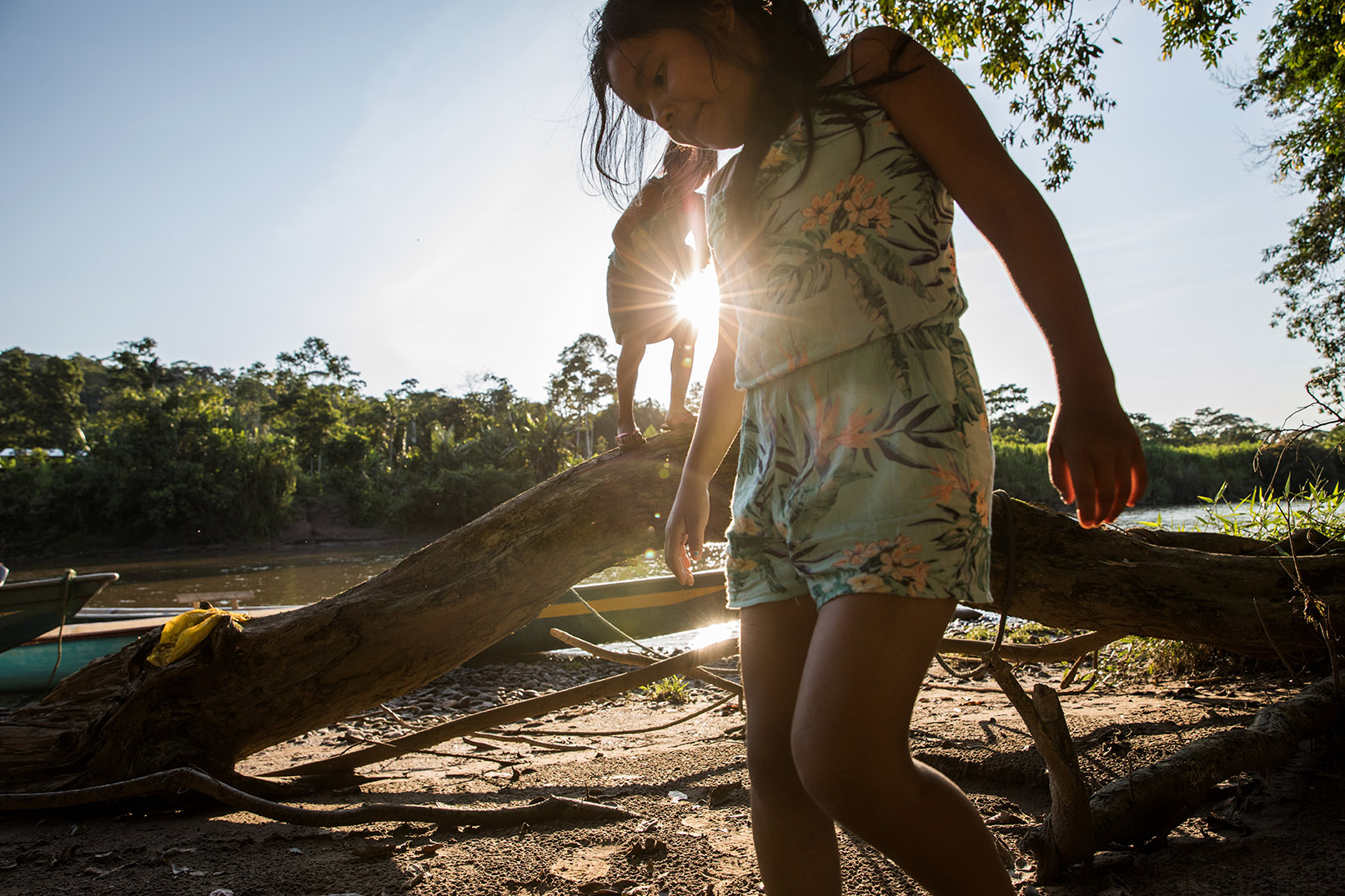

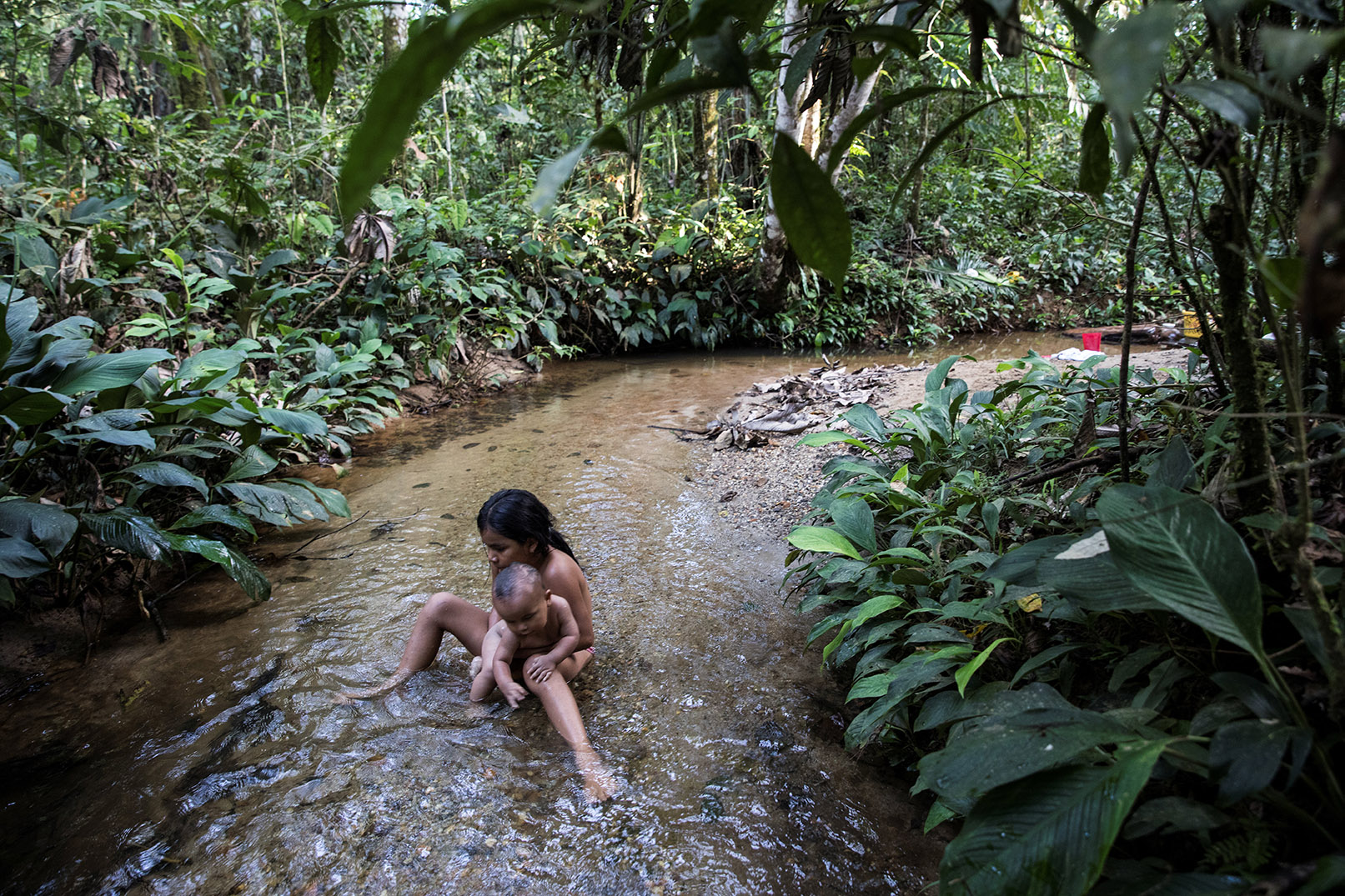
“For us, the native people of the Amazon, the forest is alive. It is Kawsak Sacha. It is inhabited by Protective Beings who watch jealously over the balance of fragile ecosystems and their relationship with human beings. The waterfalls, lakes, rivers, marshes, trees of life, sources of food and minerals, the great trees and the mountains all have their protective beings: these are the Runayuk.” The Kichwa people of Sarayaku in the heart of Ecuador are entirely self-sufficient. They live in the mountainous forests of Pastaza, criss-crossed by numerous rivers that flow downstream to join the Amazon. Like all the people living in these tropical forests eroded by urbanisation and industrial exploitation, they are fighting to preserve their way of life. Developing wells for extracting oil from beneath the forest floor is a threat to water quality as well as to biodiversity and residents’ health. French-Spanish photojournalist Catalina Martin-Chico received a World Press Photo award in 2019 for her long-term project on the FARC in Colombia, and is highly familiar with South America and areas that evolve behind closed doors. After a long journey by car and then pirogue, she reached a Kichwa village and spent several weeks living alongside its inhabitants to understand their identity and their struggle. She shared the life of an ethnic group dependent on a subsistence economy, where the forest provides most resources. It is a community committed to protecting an endangered biodiversity.
JARDIN DES MARAIS
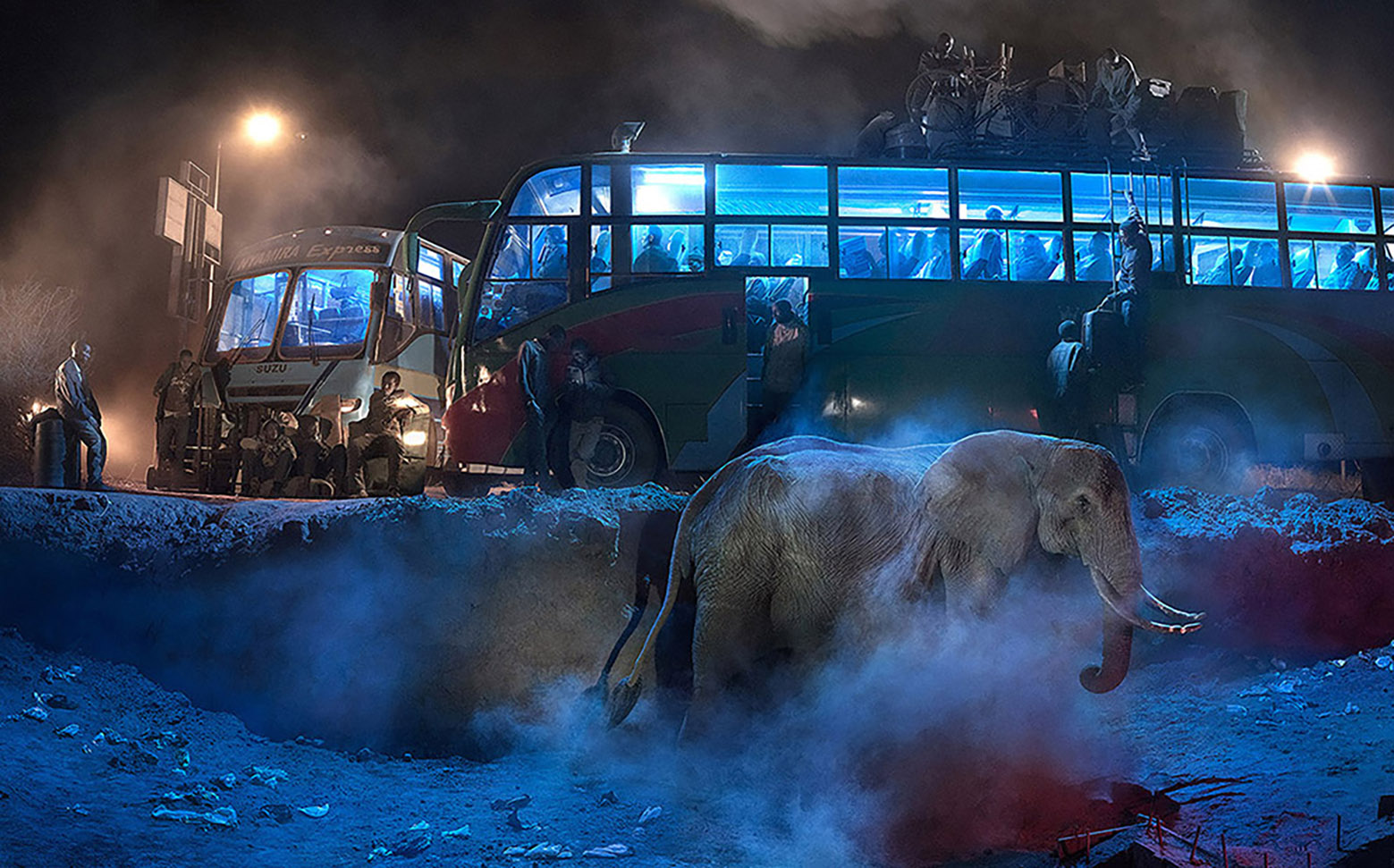
“On This Earth, A Shadow Falls, Across the Ravaged Land.” A single expression was not enough for Nick Brandt. Made up of the titles of his first three books, On This Earth, A Shadow Falls, Across the Ravaged Land, he alerted the world to the dangers of hunting and poaching African wildlife early on, championing the cause through his commitment and his NGO, Big Life Foundation.
Despite some progress made in the field of conservation – such as the closure of the ivory market in China – the photographer is continuing the fight. With This Empty World, he decries the rampant urbanisation that results in the loss of natural habitats for animals – the main threat to ecosystems today. In photographs where dystopia rubs shoulders with surrealism, elephants, rhinos, lionesses and giraffes wander aimlessly amid scenery created from scratch by Nick Brandt and his teams. His pictures are produced by merely superimposing two images. No other trickery is involved. A process that is very much like its creator: ambitious, committed and visionary. This latest monograph, a first in colour for Nick Brandt, is a striking illustration of a world in which there is little room left for animals, overwhelmed by rampant human development, to survive. This is a work that questions us about the future of our world.
GARAGE
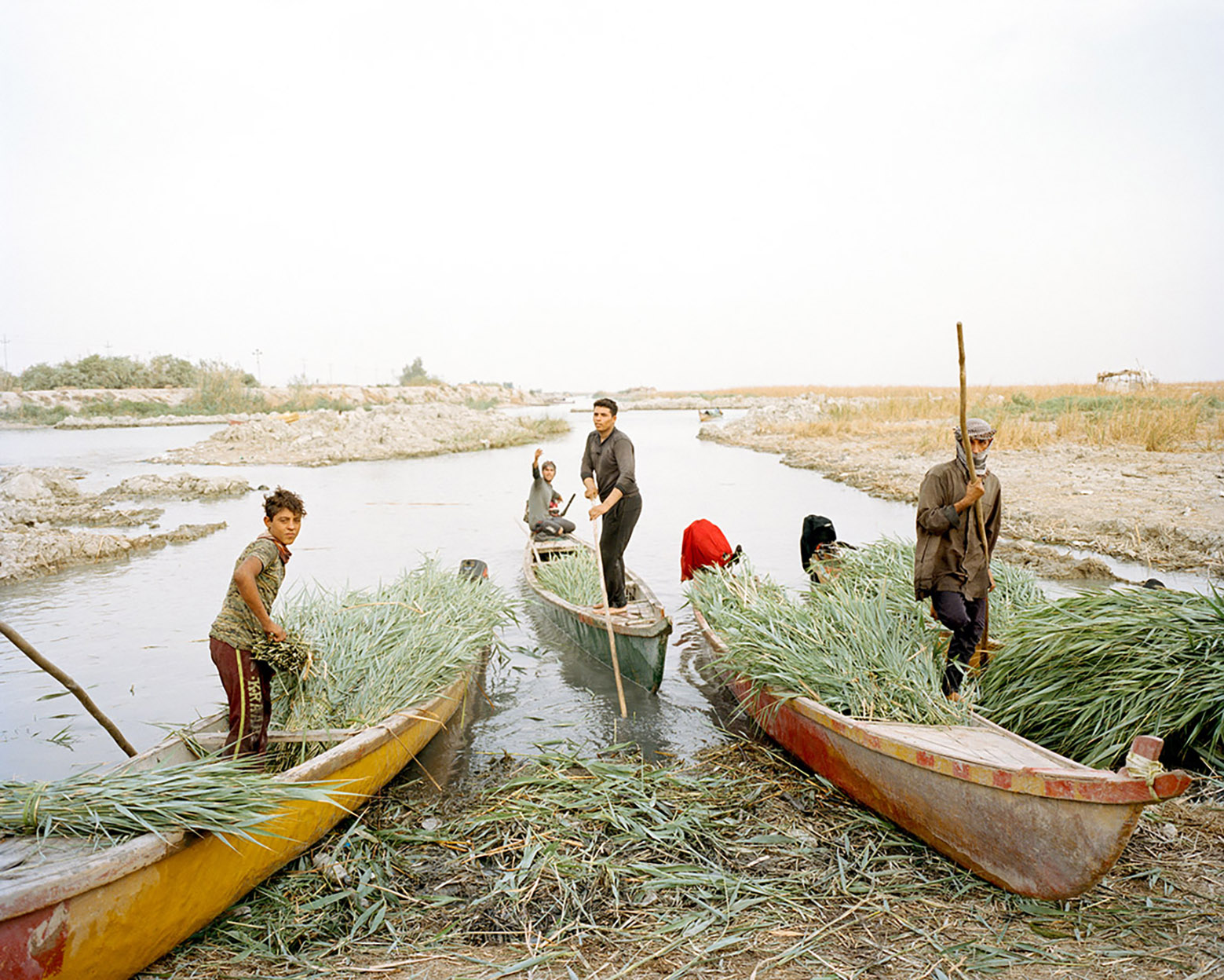
The Garden of Eden exists and is in danger. Located in Iraq, in the marshlands of ancient Mesopotamia, it truly embodies the vast richness of the cradle of the ancient Sumerian and Assyrian civilisations. Nestled at the confluence of the Tigris and the Euphrates, western Eurasia’s largest wetland ecosystem, which was listed as a UNESCO World Heritage Site in 2016, is now on the verge of drying out.
In 1991, Saddam Hussein condemned the region by building dykes to drive out the Shiite rebels who had retreated here, leading to an exodus of the local population. After the fall of the Iraqi dictator, inhabitants destroyed the barriers and released the water. But the surface coverage afforded by this water has now dwindled drastically: in 1990, it covered up to 13,000 km², but today, that figure has fallen to just 1,600 km². Reasons for this include the mismanagement of resources by the Iraqi central government and the construction of several dams upstream in Turkey (the GAP Project), which have significantly diminished the rivers of Mesopotamia.
Only a concerted solution implemented by the countries bordering the Tigris and the Euphrates can prevent a major ecological disaster: the disappearance of a unique biosphere and the evaporation of an ancestral culture based on fishing and buffalo farming. If a solution is not found, the rapid draining of southern Iraq could spark another conflict. From Turkey’s dams to the waters of the Shatt-el-Arab river in southern Iraq, photographer Mathias Depardon has followed the course of the Tigris, impoverished by major construction works, wars and an endemic drought. His photographic road movie depicts a slow, agonising decline.
CHEMIN DES LIBELLULES
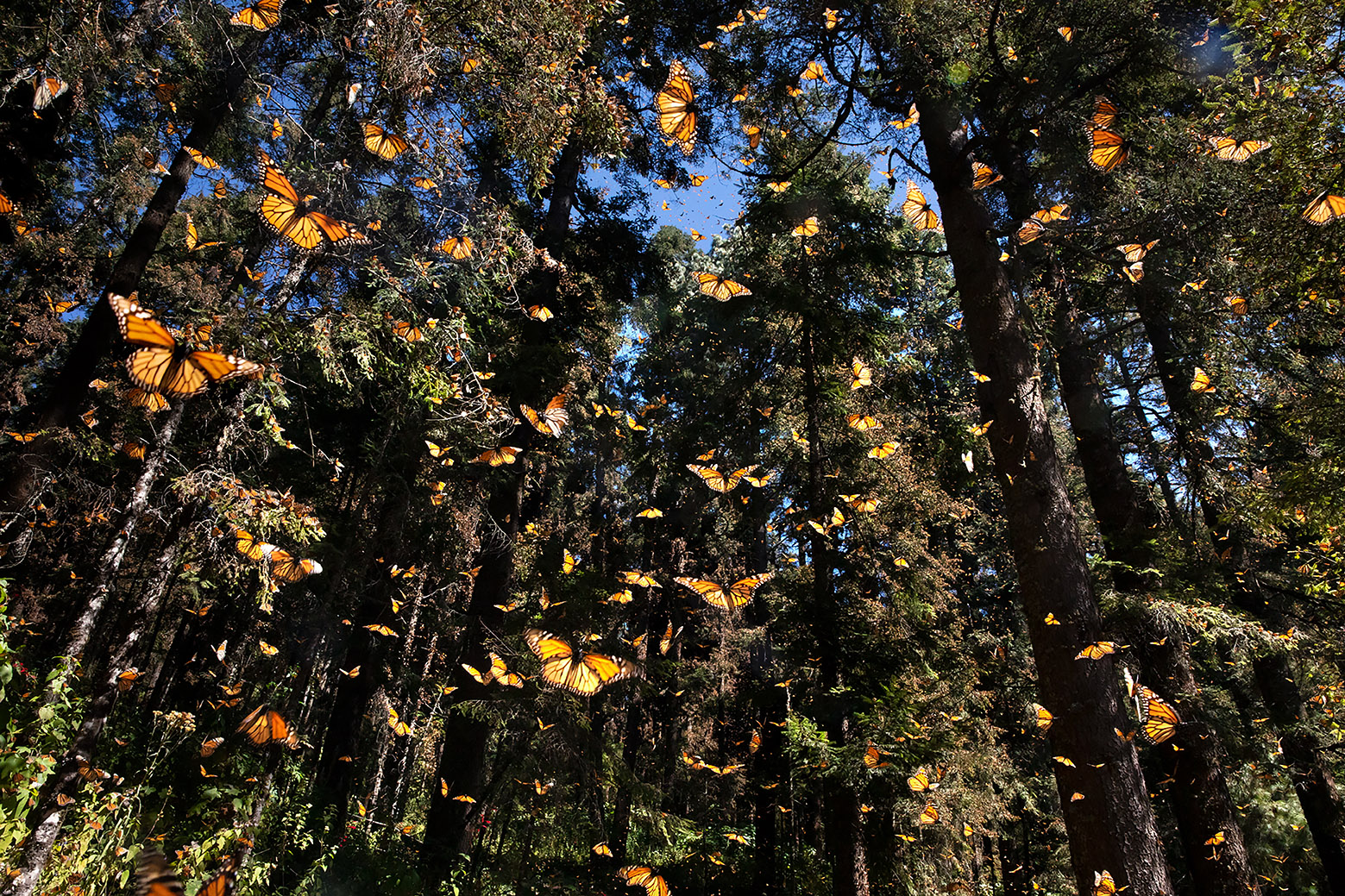
This is the tale of a journey, of an epic migration rarely seen in the animal kingdom. When winter comes, the Monarch butterfly leaves its North American domain and spends two months travelling at a speed of almost 75 kilometres a day to the sacred-fir forests in the mountains of central Mexico. The insects head to what scientists call their ‘overwintering location’ high up in the state of Michoacán. The Monarchs come here to flee the frigid temperatures of the northern part of the continent, travelling up to 5,000 kilometres to hibernate on the trunks and branches of these soaring fir trees.
However, as a butterfly’s lifespan rarely exceeds five weeks, those that make the return trip are actually distant descendants of those who made the outward journey! What is even more astonishing is that every year, as summer ends, the Monarchs give birth to a special kind of butterfly known as the Methuselah generation. Unlike the others, these butterflies can live up to eight months and thus take part in both legs of the journey. It’s as if humans were able to give birth, as required, to children with a life expectancy of several hundred years.
Pascal Maitre travelled to the Mexican sanctuary of these butterflies, which are threatened with extinction because of rampant deforestation. This problem has now been successfully countered by the action of WWF Mexico, with support in its reforestation policy from the Yves Rocher Foundation.
JARDIN DES MARAIS
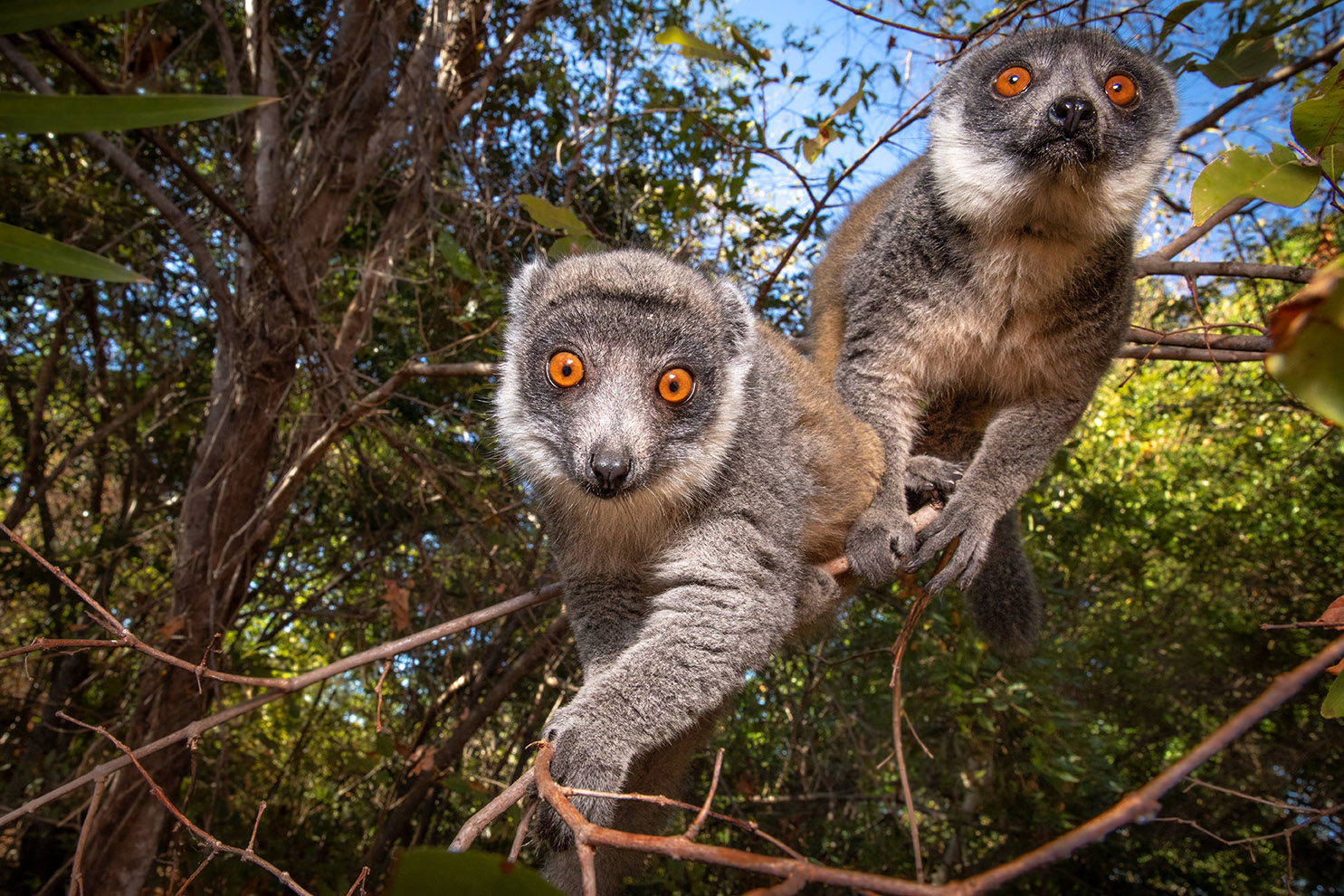
Ulla Lohmann is a German documentary film-maker, photographer and adventurer with nature at the core of her concerns. She is renowned for her extraordinary images of the Vanuatu volcanoes and the ethnic groups of Papua New Guinea. “Ever since I was a child, I’ve learnt to read animal tracks in the forest and understand the flow of the seasons and the cycles of animals.” Unsurprisingly, therefore, the Yves Rocher Foundation tasked her with capturing images of the people in Madagascar who are fighting to preserve a threatened natural area. On this southern African island, deforestation is a disaster: through the exploitation of precious wood and bush fires, the country has lost almost half of its natural forest area over the last 60 years. Ulla Lohmann visited the site of Antrema in north-west Madagascar, a 20,660-hectare biocultural reserve protected by the Sakalava community. Here lemurs, an endangered endemic species, are considered sacred and are thus protected, while wild logging is severely punished. Meanwhile in the Analanjirofo region on the other side of the island, reforestation has become a regional cause: whole families are working with NGOs to replant clove trees or fertiliser trees to generate additional income. Lohmann’s road movie resounds like a true hymn to life.
JARDIN DES MARAIS



